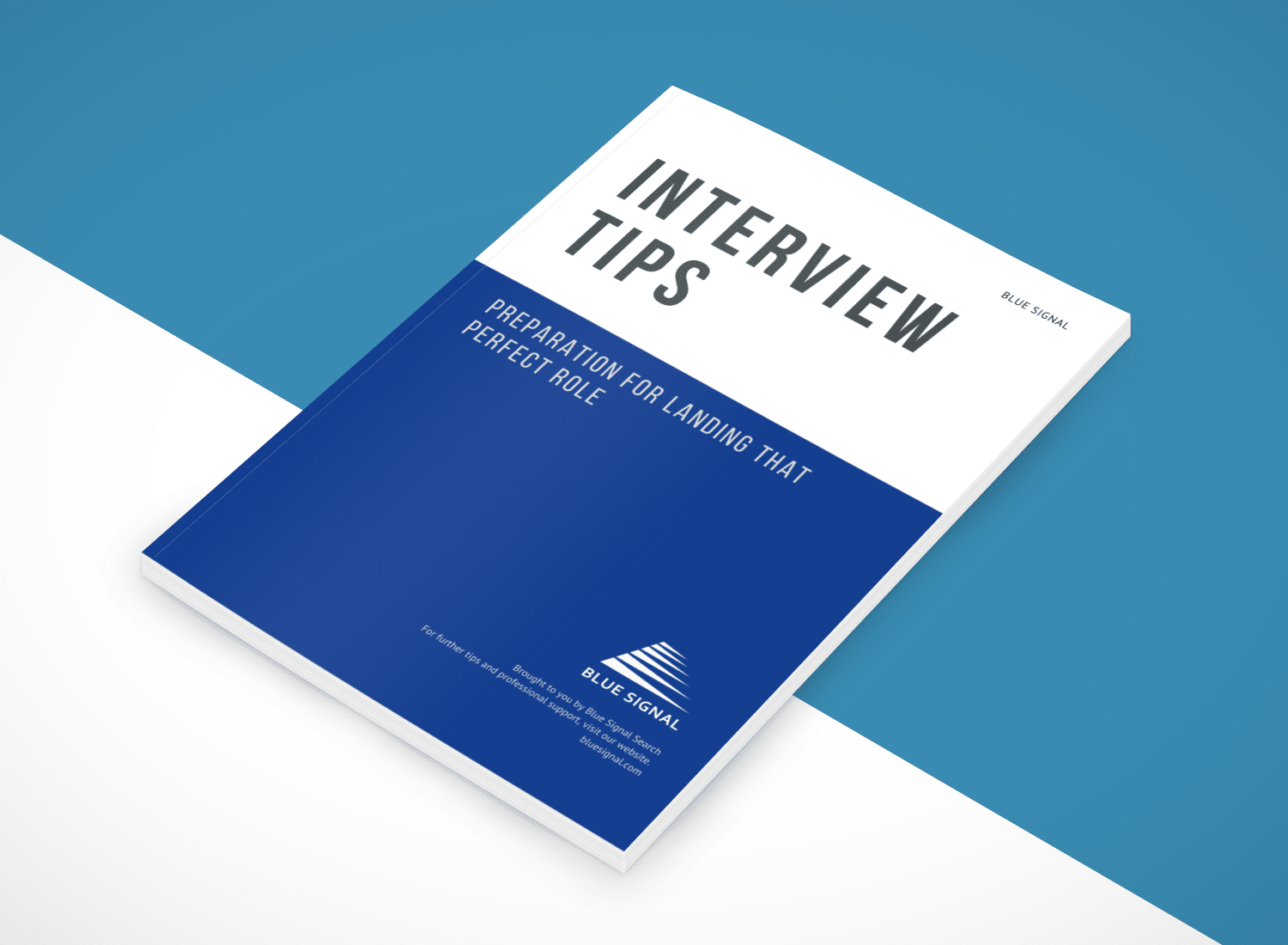Companies often use interviews as the first step in the hiring process. An interviewer’s goal is to determine whether the candidate possesses the technical skills for the position, can speak to the desired qualifications and accomplishments, fits the company culture, and is truly interested in the opportunity. The candidate’s goal is to gather information about the role, company, and hiring manager while also trying to make it to the next step. From the first impression to the negotiation phase, it’s your job as a candidate to make sure you are properly prepared.
The best way is to work with a recruiter - like the ones at Blue Signal - to help coach you through the process and give you even further insight into the company, the role, and what they are looking for. Even without this expertise, you can ensure a positive impression by following the interview tips outlined in the following download!

If you are interested in learning more about what a recruiter can do for you as a candidate in the process, contact one of our experienced and discrete recruiters today to talk about the opportunities available for you.



 In today’s job market, a job listing that does not work on mobile is missing out on more than half of the potential candidates. Americans are more connected than ever before, and job seekers are looking for convenience.
In today’s job market, a job listing that does not work on mobile is missing out on more than half of the potential candidates. Americans are more connected than ever before, and job seekers are looking for convenience.